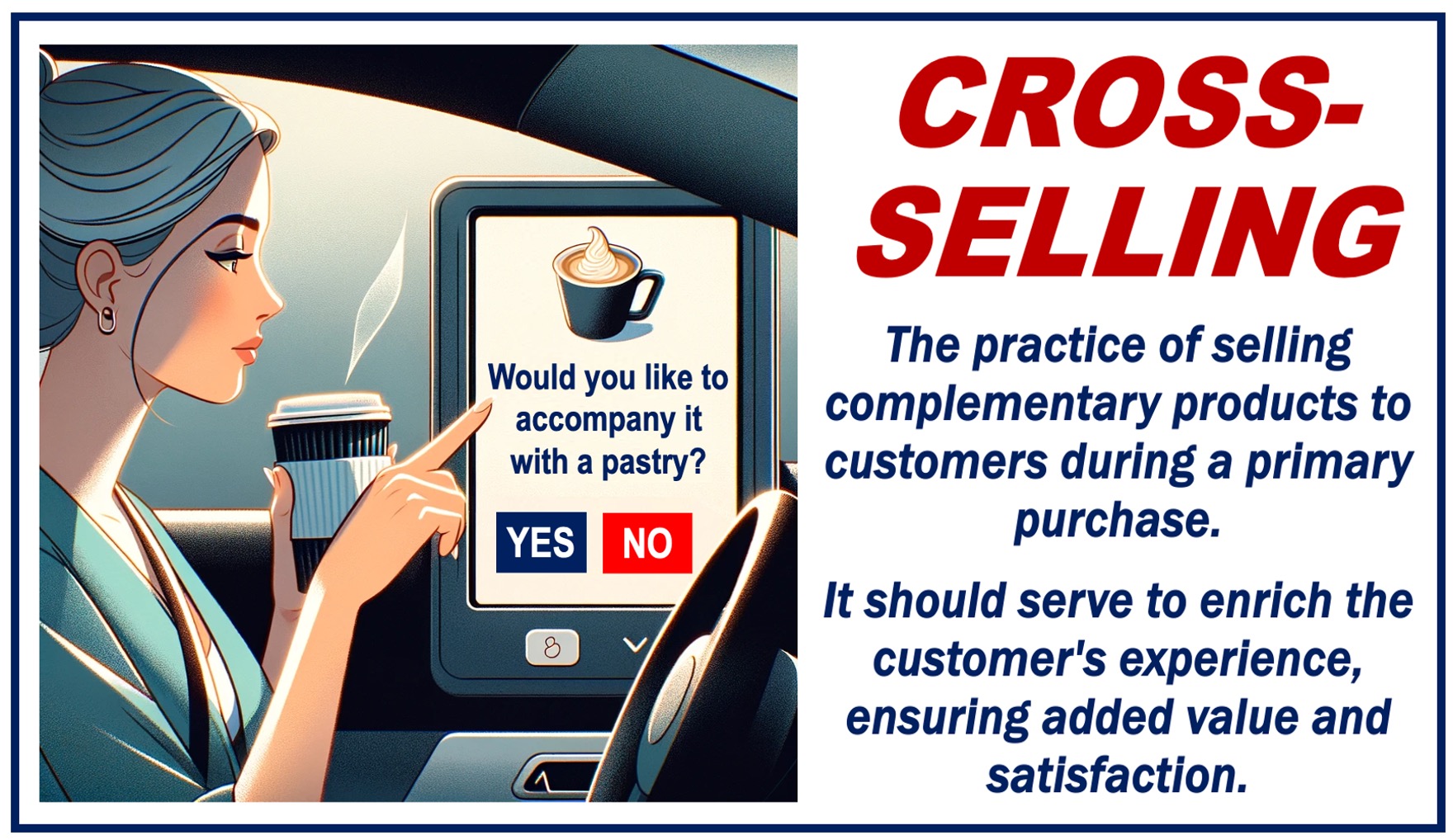Cross-Selling is a sales technique where a business offers a customer additional products or services that complement what they’re already buying. It’s a clever way for sellers to boost sales and provide more value to their customers.
Salesforce.com says the following about the term:
“Cross-selling involves selling related, supplementary products or services based on the customer’s interest in, or purchase of, one of your company’s products. It’s a great way of increasing customer loyalty and deepening customer relationships which in turn can improve customer lifetime value and retention.”
Cross-selling is similar to upselling, but it encourages customers to purchase additional items, while upselling aims to persuade them to buy a more premium version of their initial choice.
How Does Cross-Selling Work?
- First Example – Buying a Laptop
Let’s imagine you’re purchasing a new laptop online. The online retailer might suggest you also add a protective case, a wireless mouse, or a software package – things that make sense to buy together. That’s cross-selling in action!
- Second Example – Ordering a Latte
If you’re at a coffee shop ordering a latte, the barista might ask whether you would like a muffin or pastry. This is also cross-selling – the coffee shop employee is encouraging you to buy something that goes well with your coffee.

Why Do Businesses Cross-Sell?
Sellers offer additional relevant products or services for the following reasons:
-
More Sales
By offering relevant products, businesses can persuade customers to spend more.
-
Happy Customers
Cross-selling helps customers discover things they might need or enjoy, enhancing their experience.
-
Stronger Relationships
When done well, cross-selling shows customers that the business understands their needs and wants to help. This can lead to greater customer loyalty and brand image.
Cross-selling in Different Businesses
Cross-selling can be used in many ways:
-
Retail Stores
Suggesting items that match an outfit a customer likes, such as a matching pair of socks to go with that new tie.
-
Online Marketplaces
Recommending products under the “Frequently Bought Together” section, such as a phone case or screen protector for a customer who is buying a new smartphone.
-
Service Businesses
A hairstylist recommending haircare products tailored to their client’s hair type, such as shampoo and conditioner that are specific for color-treated hair, styling products suited for fine or thick hair, or deep conditioning treatments for damaged hair.
Some Useful Tips
-
Get to Understand Your Customers Well
Identify what additional products or services would genuinely benefit them. By building a customer profile based on past purchases, preferences, and even casual conversations, you can personalize your cross-selling recommendations.
This improves the customer experience, potentially leading to repeat purchases.
-
Make Relevant and Helpful Suggestions
Offer items that directly relate to the customer’s primary purchase. Aim to enhance their purchase by offering products that can elevate the use of the primary item, ensuring the suggestions are targeted and beneficial.
-
Don’t Be Pushy
Cross-selling should be about enhancing the customer experience, not just increasing sales. The approach must be empathetic and attentive, ensuring that any suggestions align with the customer’s needs and interests.
When done thoughtfully, it demonstrates that you value their satisfaction over a quick transaction.
The Power of Cross-selling
When done correctly, cross-selling is a win-win situation for both the seller and the customer. The business sells more, which means greater revenue, and the customer gets a better overall experience.
It is a clever and thoughtful sales strategy that can benefit everyone involved.
